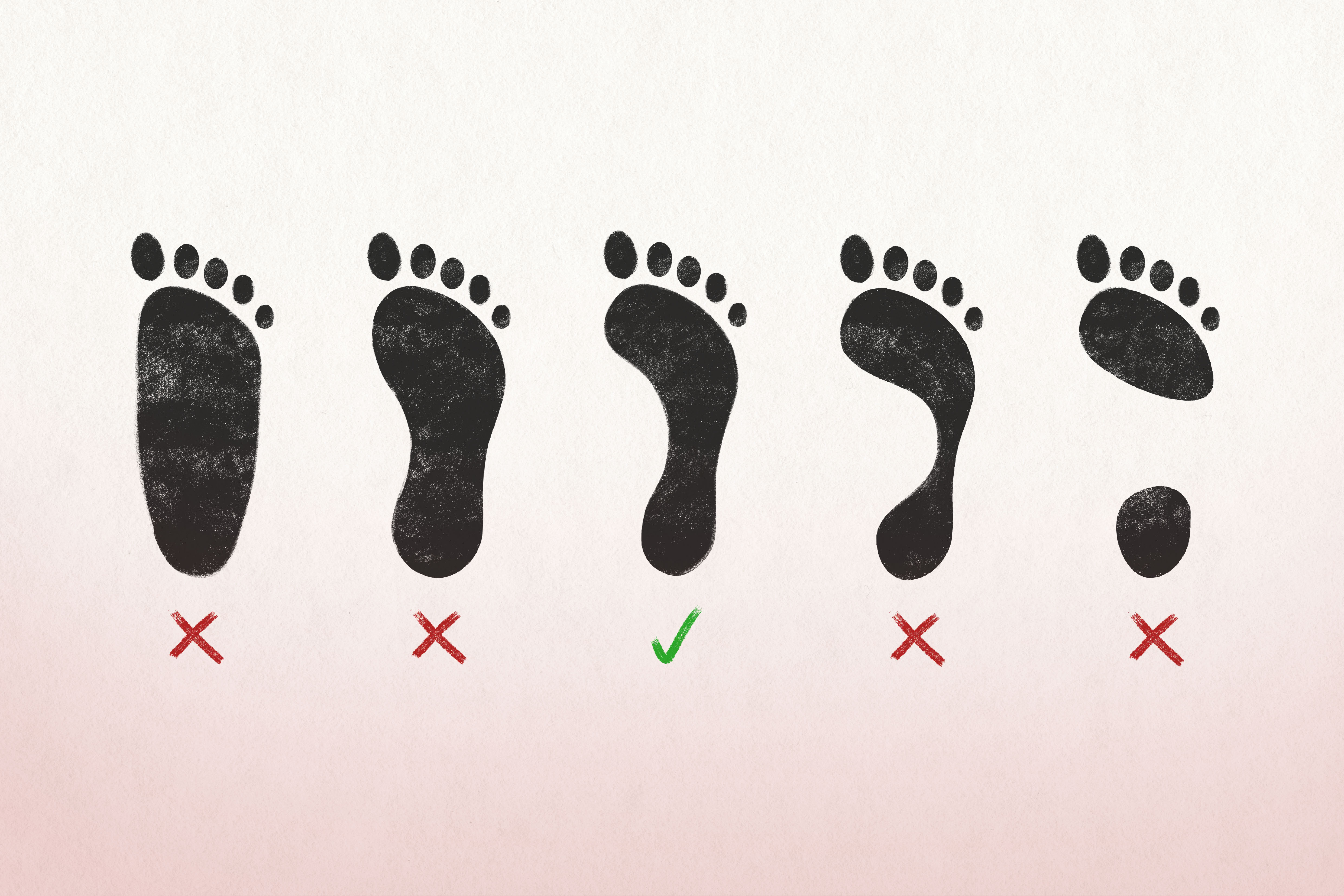How to Recognize Flat Feet and How to Work with the Arch for Proper Function?
Flat feet are a frequently discussed topic not only among podiatrists but also the public, and not just in children. In the following lines, you will learn how to recognize flat feet, including their symptoms, how to prevent flat feet, and whether or not barefoot shoes are suitable for flat feet.
What are flat feet?
Flat feet refer to a condition where there has been a weakening, significant decrease, or so-called collapse of the foot arch.
What is the foot arch?
The foot arch is responsible for protecting our joints, muscles, and ligaments by absorbing shocks and weight. The foot arch consists of bones, muscles, and ligaments, forming an imaginary triangle that handles the weight of our entire body with each step.
The foot arch is divided into longitudinal and transverse arches. The longitudinal arch is responsible for shock absorption, as it distributes our weight from the heel bone towards the toes, slightly flattening in the process. The transverse arch helps to maintain our balance on uneven surfaces.
How to recognize flat feet?
If you suspect that you or your children have flat feet, it is recommended to visit a podiatrist. However, you can get an approximate idea from the imprint of a wet foot. The footprint of a foot with an ideal arch should have a width at the middle of its length approximately half the width of your instep. If it is wider, the arch is collapsing or has already collapsed.
The opposite extreme can be a high arch, which you can recognize by the foot being narrower in the arch area or no footprint visible at all.

You can also recognize the fact that you have flat feet by typical symptoms, which include excessive fatigue after a long walk, swelling of the feet and calves, as well as burning sensations, and later corns and pressure sores.
In young children under 3 years old, you don't need to address the condition of the arch based on footprints, as their arch begins to develop around the age of 3. However, it is advisable to regularly visit a pediatrician and consult with them if there are any doubts about the healthy development of the feet. At the same time, it is precisely at this age that the first deformations of the feet occur, hindering their natural development. Therefore, it is appropriate to provide children with spacious shoes at home that respect their feet.
Even in adults, it is advisable to consult a doctor, as sometimes the problem is not actually flat feet but an inverted ankle.
Why and how do flat feet develop?
There is a wide range of factors that influence the condition of our arch. These include being overweight, standing all day at work, genetic predisposition, weakened muscles, and especially poor footwear.
How to get rid of flat feet?
Of course, prevention is best, but if you already have flat feet, you cannot do without arch exercises. Basic stimulating exercises include walking barefoot or walking on a bar, both of which are highly effective for strengthening the arch.
At the same time, it is necessary to invest in suitable footwear. Many people consider orthopedic shoes to be the primary solution, but the main thing is for the shoe to be spacious and not constrict the foot. Orthopedic insoles will certainly reduce foot and arch pain but will not help much with strengthening them.
Flat feet and barefoot shoes - are they suitable or not?
If you have a problem with flat feet, it is advisable to use sufficiently wide shoes that have no heel and are naturally soft or have a thin sole, which stimulates the feet and helps you become aware of your walking technique. Therefore, custom-made barefoot sandals can be an ideal choice.
On the other hand, barefoot shoes are not always suitable for flat feet, as sometimes the condition of the feet is so unfavorable that even a doctor may prohibit them and prescribe special medical footwear.

